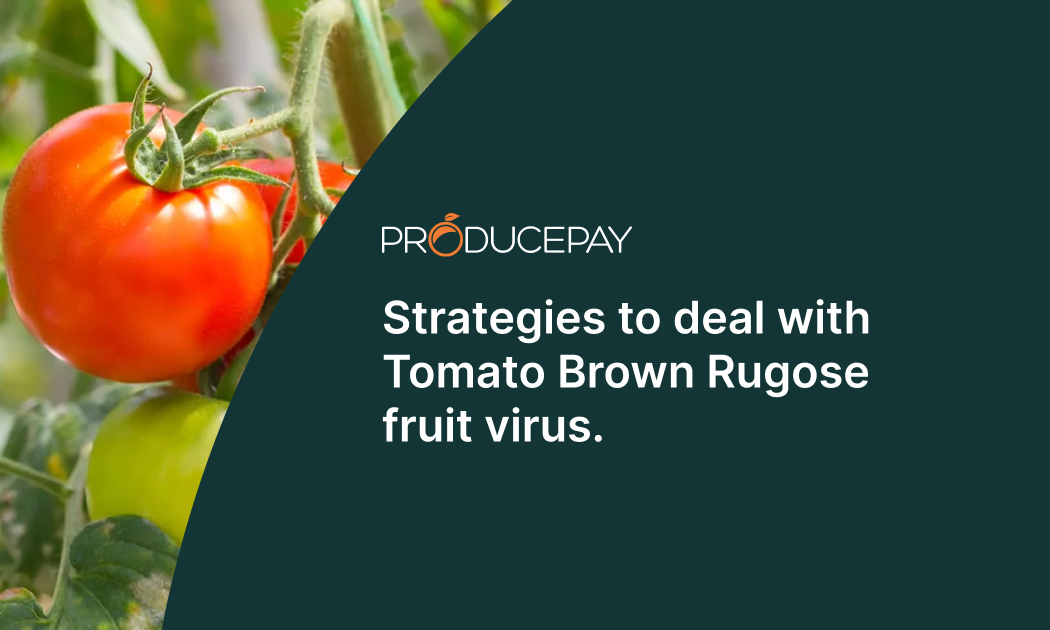
Strategies to deal With tomato brown rugose fruit virus.
The Tomato brown rugose fruit virus (ToBRFV) has impacted production in many areas of Mexico. The problem is so widespread that some growers have switched to other crops because the virus prevents tomatoes from reaching the quality standards required for export markets.
This has been the case for greenhouse tomato growers in the Mezquital Valley, Hidalgo, who have experienced virus-related production and export problems for two consecutive years.
Mexico is one of the leading tomato-producing countries and the largest exporter worldwide, with a total production of 3,324,263 metric tons in 2021, including exports of 1,729,505 metric tons.
Each year, more than ten states produce over 100,000 tons of tomatoes, making it one of the most important crops in the country. Sinaloa, San Luis Potosi and Michoacán are Mexico’s most productive tomato-growing regions, with a collective harvest of more than 1.4 million metric tons in 2021.
Therefore, this virus could cause severe problems for both domestic supply and that of the countries that buy from Mexico, such as the United States, the primary commercial customer for Mexican tomatoes.
Where is the tomato brown rugose fruit virus present?
This virus belongs to the Tobamovirus genus and is present in tomato and chile crops worldwide, both in open field and greenhouse production.
The virus was first reported in 2014 in Israel, and arrived in Mexico in 2018, specifically in Yurécuaro, Michoacán, through contaminated seeds that were most likely imported from Israel. Subsequently, the virus has spread rapidly throughout the country.
It has also been found in tomato crops in Germany, Italy, the United States, Holland, Spain, France, Israel, Turkey, and China, and it must be studied in depth to address the serious damage it is causing around the world.
What symptoms does it present in tomato crops?
ToBRFV can remain stable for days, months or years, which means an infected seed is very dangerous. If it is sown, the virus spreads to the rest of the plant after germination. The other means of transmission is mechanical, infecting other plants through injuries or wounds they may have.
Therefore, the virus can appear at any stage of growth, although it usually starts with the young leaves, which show yellow spots and folds. It also causes wilting in the apical part of the plant.
The fruit will usually acquire a rugged appearance, brown spots, green striations, and irregular ripening. This seriously degrades quality and an infection can cause a total loss of both fruit and plants.
3 strategies for dealing with tomato brown rugose fruit virus
Due to the great economic importance of the tomato crop, it is crucial to manage ToBRFV appropriately, but this is not easy, as it is a relatively new virus.
Because there are no effective chemical products for its control, growers must discard infected plants as soon as they are detected, as well as all those that surround them.
It may seem exaggerated, but failing to react in time to the presence of ToBRFV can cause tremendous economic losses and early detection of an outbreak is the best way to reduce the risk of dissemination.
The following are some strategies that growers can implement to prevent the virus from spreading in their crops:
1. Prevention
The most effective strategy is to prevent the disease from ever making it to your crops. This can be done by using preventive measures, such as:
- Use seeds that are certified as virus-free
- Clean and disinfect tools and machinery
- Enforce strict disinfection protocols for personnel and facilities.
- Avoid reusing substrates
2. Resistance
Opting for the use of genetically resistant varieties is so far the most effective strategy against tomato brown rugose fruit virus. However, their development and distribution are limited.
Companies are working to develop resistant varieties, and several have been released over the last year with positive results so far.
3. Recovery
In addition to the above, these strategies have also proven effective at preventing the virus:
- Using thermotherapy to eliminate the virus present in seeds has shown positive results.
- Crop rotation, alternating tomatoes with another crop that is not susceptible to the virus.
Governmental measures
To help keep this virus under control, the National Food Safety and Quality Service (SENASICA) in Mexico strengthened its phytosanitary surveillance and regulatory measures for imported products in 2018 to prevent the entry or exit of contaminated produce.
Meanwhile, the United States issued federal order DA-2019-28 for tomato imports, establishing phytosanitary requirements for exporting tomato seeds, seedlings, and fresh fruit to the United States to be free of this virus, preventing the entry of any of these products that fail to meet these requirements.
Do you grow tomatoes? ProducePay can help you!
If you’ve been dealing with Tomato brown rugose fruit virus, we know it can be a challenge to recover and successfully return to production. That’s why ProducePay offers Pre-Season financing services to help agro-exporters recover from problems like this virus.
Sources: Intagri, Colpus, Senasica, SADER, El Sol de Hidalgo, MDPI, Agroexcelencia.

